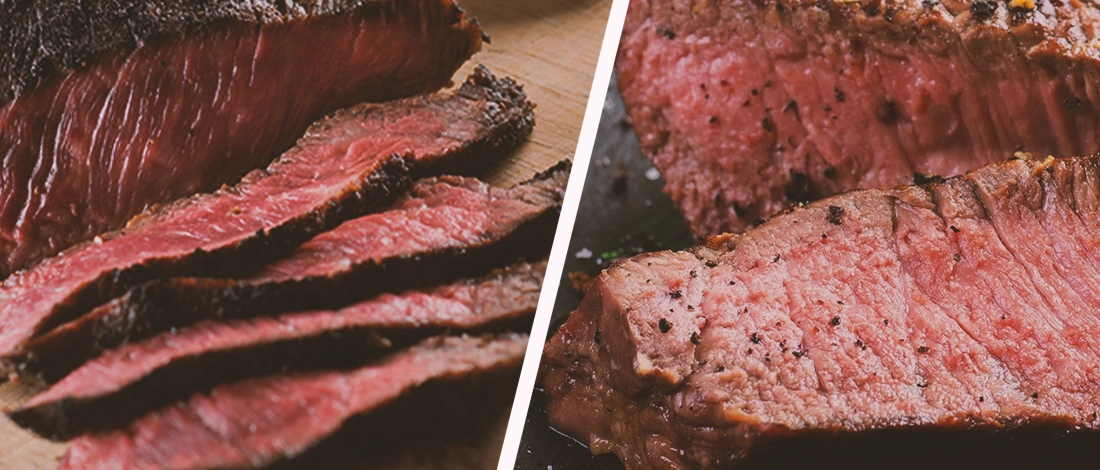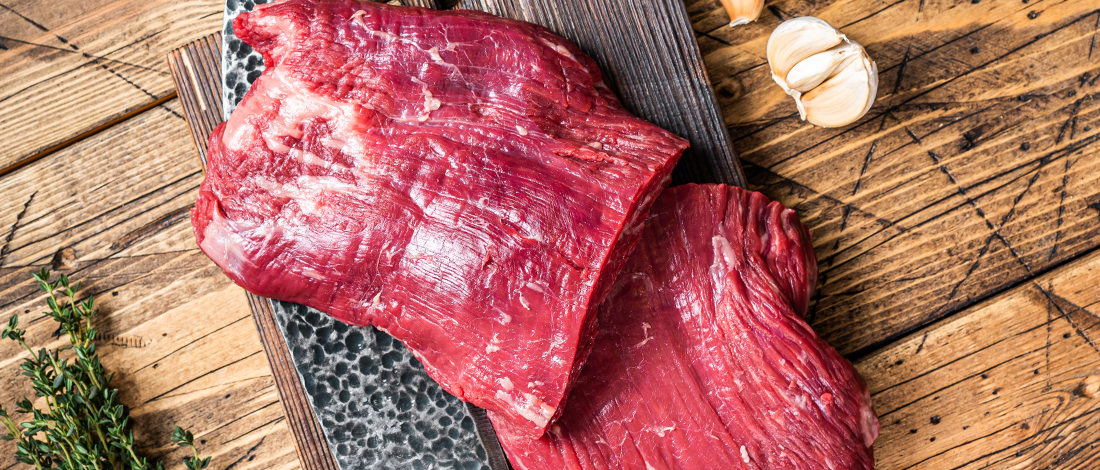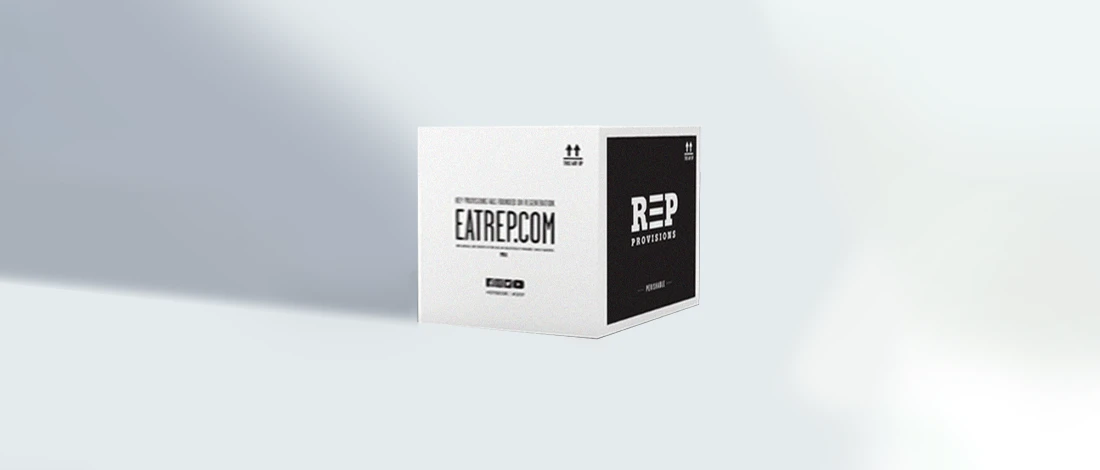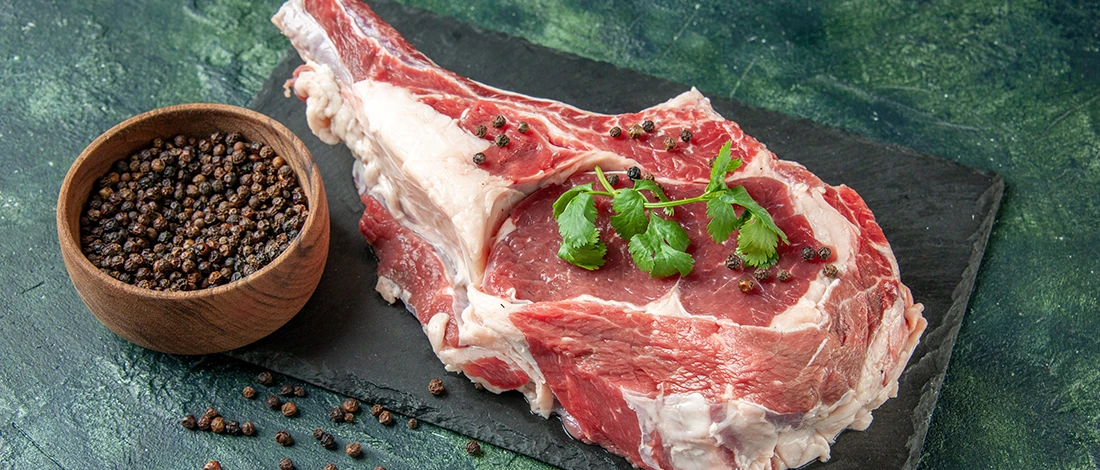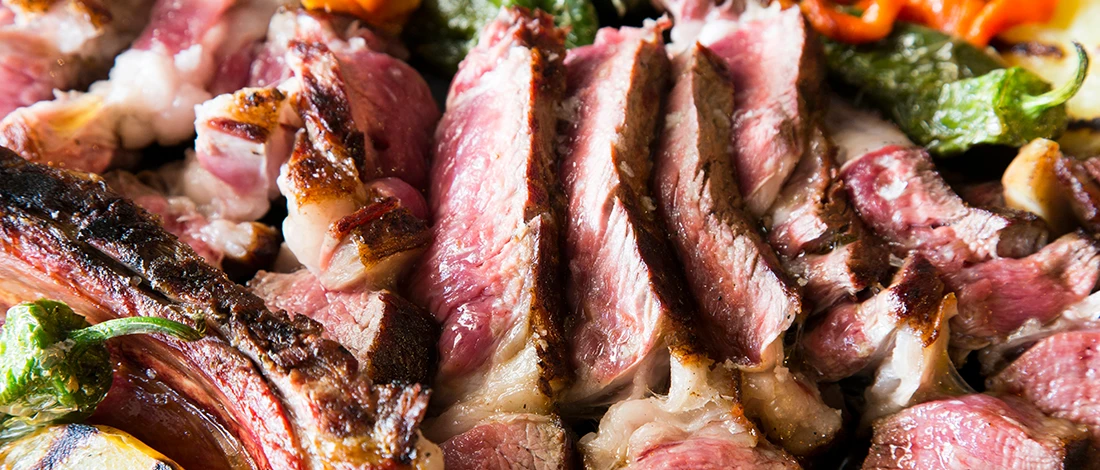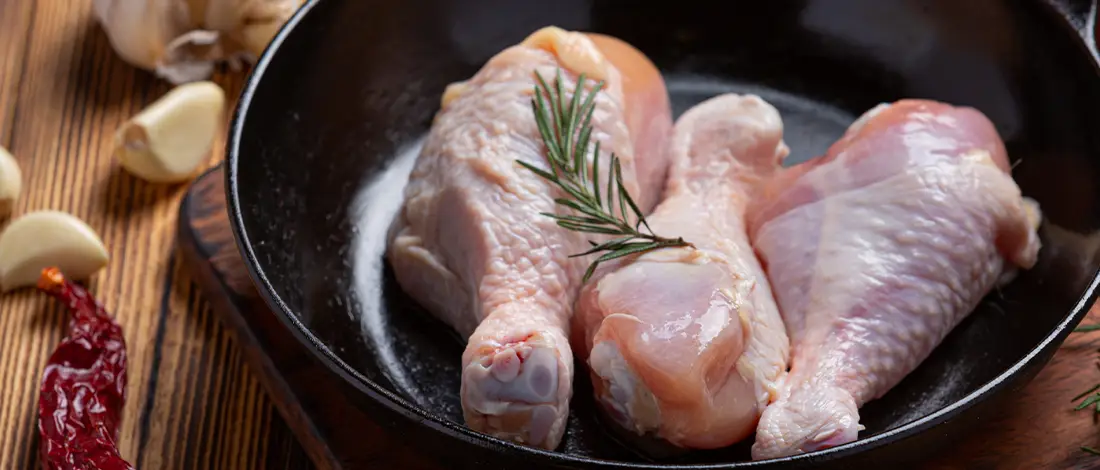Americans are among the largest beef consumers so it’s no wonder there are many different beef cuts available at a butcher shop.
You’ve probably noticed steaks labeled Prime, Choice, and Select. But what does it mean?
I’ve been on a carnivore diet for more than a decade, and my diet mostly consists of steaks. I eat them several times a week, so I spent countless hours researching different beef grades to see how they're categorized.
I also talked with a friend butcher to get his recommendation. Carnivore Style’s team has also spent time perfecting our understanding of these grades, and here’s what you should know about Choice and Prime beef grades.
Quick Summary
- Prime and Choice are USDA beef grades based on quality, flavor, tenderness and yield, with marbling being a key factor.
- Both grades constitute high quality beef, but your choice will be determined by the cooking method and your preferred dish.
- Prime beef, the highest quality, has more marbling and is often found in high-end restaurants, while Choice beef is more common and affordable.
- If you want to get some high-quality, sustainable Prime beef, check out our review of ButcherBox.
Prime vs Choice Beef
Beef is graded based on several factors. The USDA considers the following attributes:
1. USDA Prime

USDA Prime makes up the smallest percent of graded beef, and is regarded as the highest beef quality and the juiciest cut available.
USDA Prime beef grade should only be cooked medium or medium-rare to preserve the quality of the meat.
How you prepare Prime USDA-grade beef would determine the juiciness and tenderness of the dish.
Buying USDA Prime
USDA Prime is the highest quality grade beef primarily due to the amount of marbling in the meat.
They may be difficult to avail of because only a small percentage gets the label in the meat industry.
However, more meat outlets are starting to market it, especially higher-end ones, like Whole Foods.
Due to this, the percentage of USDA beef labeled Prime has gone up in recent years, from 3% in 2008 to just under 10% in 2018 [1].
"The fact of the matter is that there is far more Prime than five or 10 years ago. Part of that is better genetics, ranchers doing a better job, and raising animals with better marbling. We're seeing better grading across the board, more Prime, more Choice, less low-quality beef."
- Marc Sarrazin, Partner at NY Specialty Butcher DeBragga & Spitler
USDA Prime cuts are served in high-end restaurants, but at a high price.
2. USDA Choice

USDA Choice graded beef has much less marbling. Marbling in meat on Choice cuts looks like white flecks.
Choice beef cuts come from young cattle, younger than Select, Standard, and Commercial USDA graded beef.
USDA Choice accounts for 50% of all graded beef and is most commonly found in supermarkets and restaurants, as it’s more affordable compared to Prime.
Note: If a cow is labeled Choice, the entire cow is graded Choice. This means if you buy a sirloin or a flank steak from the same animal, both will carry the same label.
Overall, Choice steak and ground beef are somewhat less tender, slightly coarser, and a little less juicy compared to Prime. However, this also depends on how you cook your Select beef.
If you like your rib steak medium-well or well done, you should opt for Choice because the cooking process may dry out the natural juices if you choose Prime.
The best cooking methods for choice beef are grilling, roasting, frying, and braising.
Read More: What Is Choice Meat?
USDA Grades of Beef

The USDA has three grades of beef:
- Prime — The highest-quality beef cut, Prime steaks, has have the most intramuscular fat content or marbling, which affects flavor, juiciness, tenderness and texture. Due to these attributes, Prime grade beef has a high market demand. Less than 3% of beef gets the Prime grade.
- Choice — Choice beef is also of high quality but has less marbling present in the muscle fiber. However, with the proper preparation, you’ll still have delicious meat. Choice beef is more widely available, and it accounts for about 53% of consumable beef.
- Select — Select beef has low-fat content, which means it has less moisture and flavor. This is a lean meat cut, so it’s preferred by health-conscious people. It’s usually sold at supermarkets.
There are other, less common, ways in which USDA grades beef:
- Standard and Commercial — These cuts have little fat content that are usually sold as store-brand meat.
- Cutter and Canner — These grades usually come from older cattle and are used for processed meat or canned goods.
Note: All beef is inspected to make sure it’s safe, but not all beef is graded. The beef manufacturer or the beef processing facility decides whether to get beef graded or not.
Small-scale ranchers may not choose to get their beef graded, but still produce meat of excellent quality.
Another thing to keep in mind is that the USDA grades beef regardless of how the cattle are fed.
The USDA grades beef based on how the cattle were raised but does not consider if they were grass, grain or organic fed.
The main difference between Prime and Choice beef is the marbling, so the beef manufacturers focus on feed practices that increase the marbling yield, so their beef gets the Prime grade.
Who Determines Beef Grading?
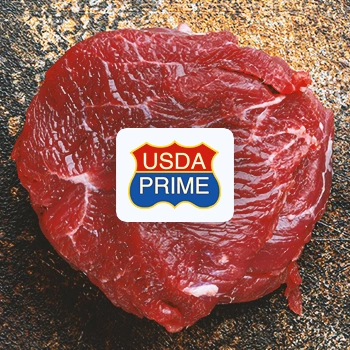
The official standards by which the United States Department of Agriculture (USDA) determines beef grading is based on safety and quality [2].
All meat intended for public consumption has to be inspected. The USDA does the meat inspection and labeling.
In some states, such as Missouri, a local inspector can grade check the meat, but the product can’t cross state lines, which is why most manufacturers opt for USDA inspection.
The USDA inspectors first check the live animal to ensure it’s completely healthy and treated humanely, then monitor the slaughtering process, animal parts and organs, temperature and consumable meat.
There are eight grades of beef — from standard and commercial grades that are sold as ungraded, utility, cutter, and canner grades, that are used in processed meat products, and of course, Prime, Choice, and Select.
USDA graders have beef graded based on two criteria, quality grade and yield grades.
1. Quality
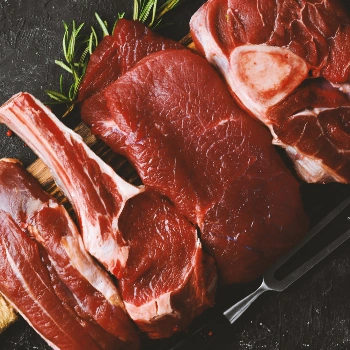
Beef quality pertains to the tenderness, juiciness and flavor of the meat. Graders also check the fat content, age, raising practices, and source.
Another important quality factor is marbling or intramuscular fat. These are small threads of fat spread between the muscle fibers in beef. You see it as white lines going through the steak. It resembles a marble pattern, thus the name.
There’s a difference between intramuscular and intermuscular fat. Marbling is intramuscular fat or the fat inside the beef, and it’s not trimmed like intermuscular fat.
For Ribeye, meat packers and graders check the amount of marbling between 12th and 13th cow ribs.
They determine if the beef in the entire cow is Prime, Choice, or Select based on this one location. This works because marbling gives the beef tenderness and added flavor.
Besides beef quality, beef is also graded on age or animal maturity. As the cattle mature, the meat gets tougher and leaner, so how tender a cut is is directly connected to the cattle’s age.
Once the marbling and animal’s age are determined, the USDA combines these two factors to determine quality grades.
2. Yield
Graders also check the yield, which is the usable lean meat left on the carcass. A cut has to have a good meat-to-fat ratio to receive high yield marks.
Yield grade ranges from 1 to 5. For example, ribeye has a USDA grade 4 because it has a 9/10 inch fat layer.
Buying Tips for Different Meat Grades

Each person has a favorite cut of beef. Some like only the tender cuts, others like ribeye muscle, filet mignon, or the New York Strip Steak.
Inasmuch as Prime cut offers the best quality beef, it may not always be the ideal choice, you should consider the dish.
For example, Ribeye has a lot of natural fat content throughout, so Choice grade may be the better option since using the more costly Prime grade would yield the same flavor.
Filet Mignon is a quality steak that’s tender when labeled either Prime or Choice. This is the least important cut to be Prime.
However, paying for a Prime label for New York Strip Steak and Kansas City Strip pays off. This is where you’ll notice the biggest difference in texture and flavor.
Buying a perfect steak also depends on what you’re cooking. The best advice is to look for the best quality you can afford and check for good marbling.
Apart from getting store-brand meat, you have the option to shop can check with local ranchers if they have Choice or Prime quality grade steaks.
1. How to select beef based on your cooking method
- Grilling — Prime cuts steaks are a great grilling option if you prefer your steak rare or medium-rare. Choice grade is more advisable if you want the meat medium or well-done.
- Smoking — Choice cut grade brisket is a better alternative since the juices of Prime beef may dry out during the long and slow cooking process.
2. How to Select Beef Based on Cattle Breeds

Another factor to consider when choosing steak quality is cattle breed, since it is a primary attribute that determines the amount of marbling.
1. Angus
Angus beef is labeled CAB, which stands for Certified Angus Beef. This isn’t a breed, but an organization that has its own certification process, so only specific cuts can be CAB certified [2].
Most Angus cuts get Prime USDA beef grades because this is high-quality meat with a lot of marbling.
2. American Wagyu
American Wagyu is a product of cross-bred cattle – Wagyu and Angus, that are both rich in marbling and yields tender, flavorful and well-textured meat.
It’s best to check with the Wagyu manufacturer regarding grades of beef or buy from manufacturers that focus on highly marbled Wagyu Prime steaks, such as ButcherBox.
Read More:
3. How to Select Beef Based on Cattle Diet

There’s also a difference in Prime, Choice, and Select beef depending on if it’s grass or grain-fed. Cattle are raised on pastures, so it’s grass-fed.
Grass-fed cattle are categorized as Choice grade because they will have less marbling compared to grain-fed.
Cattle fed with grass is better for quick grilling because the diet results in leaner meat and less fat.
Grain-fed cattle are ideal for slow cooking and barbecuing, since the meat has a higher fat content.
Cattle are raised on pastures, so it’s grass-fed.
As cattle mature, some ranchers supplement the pasture grass with other feeding options, such as grain mixed with corn, and other food-grade byproducts, such as corn flakes.
Grass-fed beef is generally considered to be healthier and more sustainable than beef from cows that are raised on grain.” - Jonathan Gill, Cheff of Ringside Steakhouse
He recommends looking for beef that is raised without antibiotics or hormones, and buying from a local source if possible to ensure quality.
Also Read: Is USDA Prime Beef Grass-Fed?
FAQs
Which Grade of Beef Is the Highest Quality?
The prime beef grade is the highest quality. It has the most marbling and is the most tender and juicy.
Is Prime Better Than Angus?
Prime isn’t better than Angus. USDA Prime beef is about the meat quality, and Angus is a breed of cattle. Angus is high-quality meat, so Angus cuts are often labeled Prime.
Is Select or Choice Better?
Choice is better than Select because it has more marbling and is more tender and juicy. Choice beef is the most widely available beef.
How Can You Tell Good Quality Beef?
You can tell good quality beef based on the tenderness, juiciness, and flavor. These are all determined by the amount of marbling available in the meat.
At Carnivore Style, we want to ensure you get the most out of your carnivore diet without sacrificing your health goals. Check out our other guides for more tips on selecting meats that support a balanced, healthy lifestyle.
References:
- https://www.meatpoultry.com/articles/21358-making-the-grade
- https://www.usda.gov/media/blog/2013/01/28/whats-your-beef-prime-choice-or-select
- https://www.certifiedangusbeef.com/


